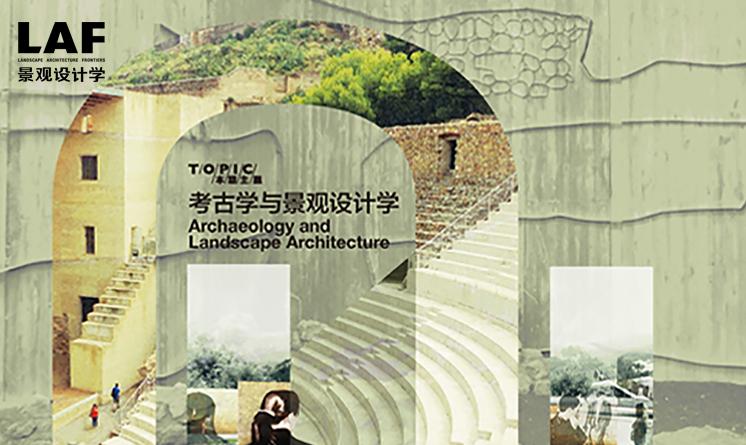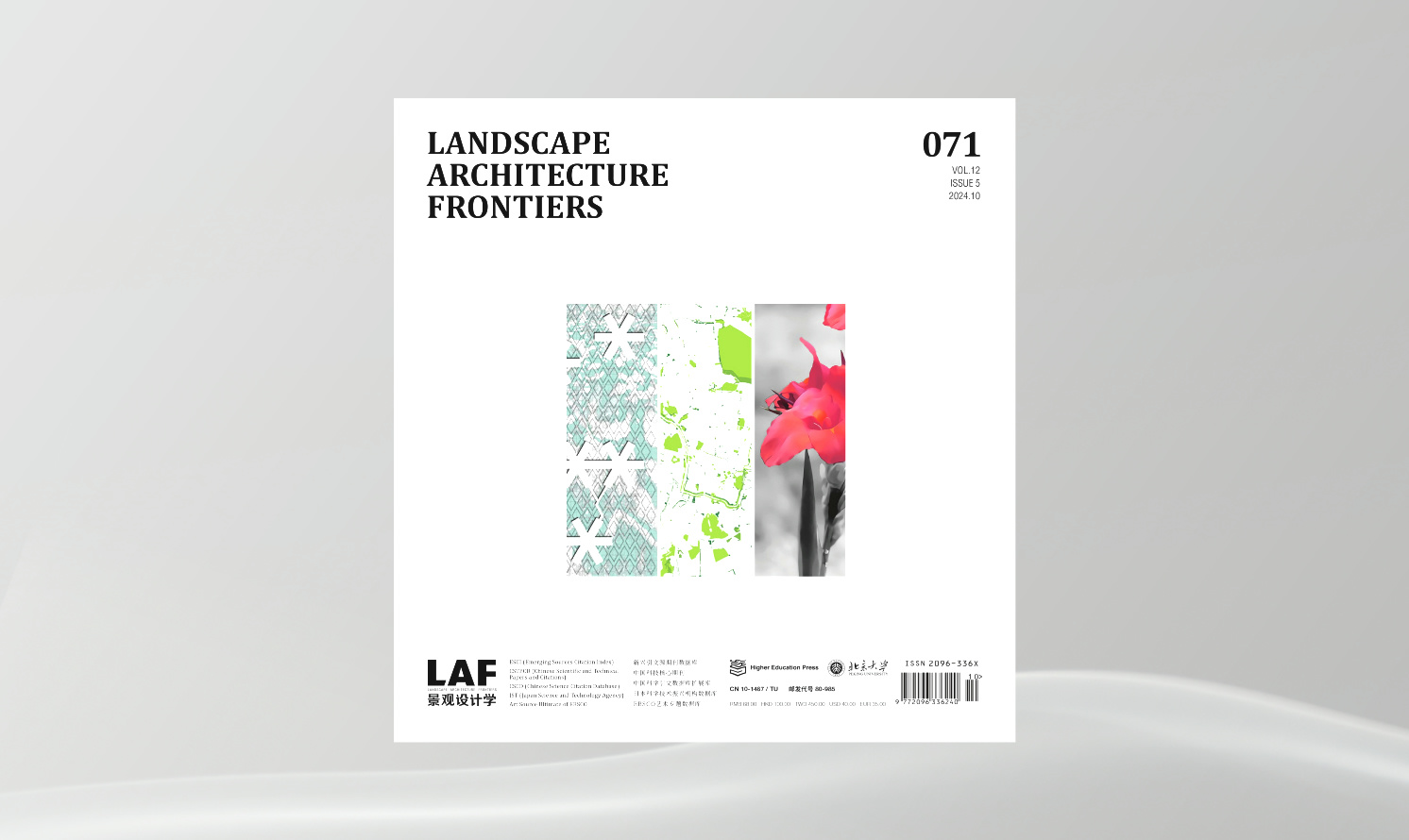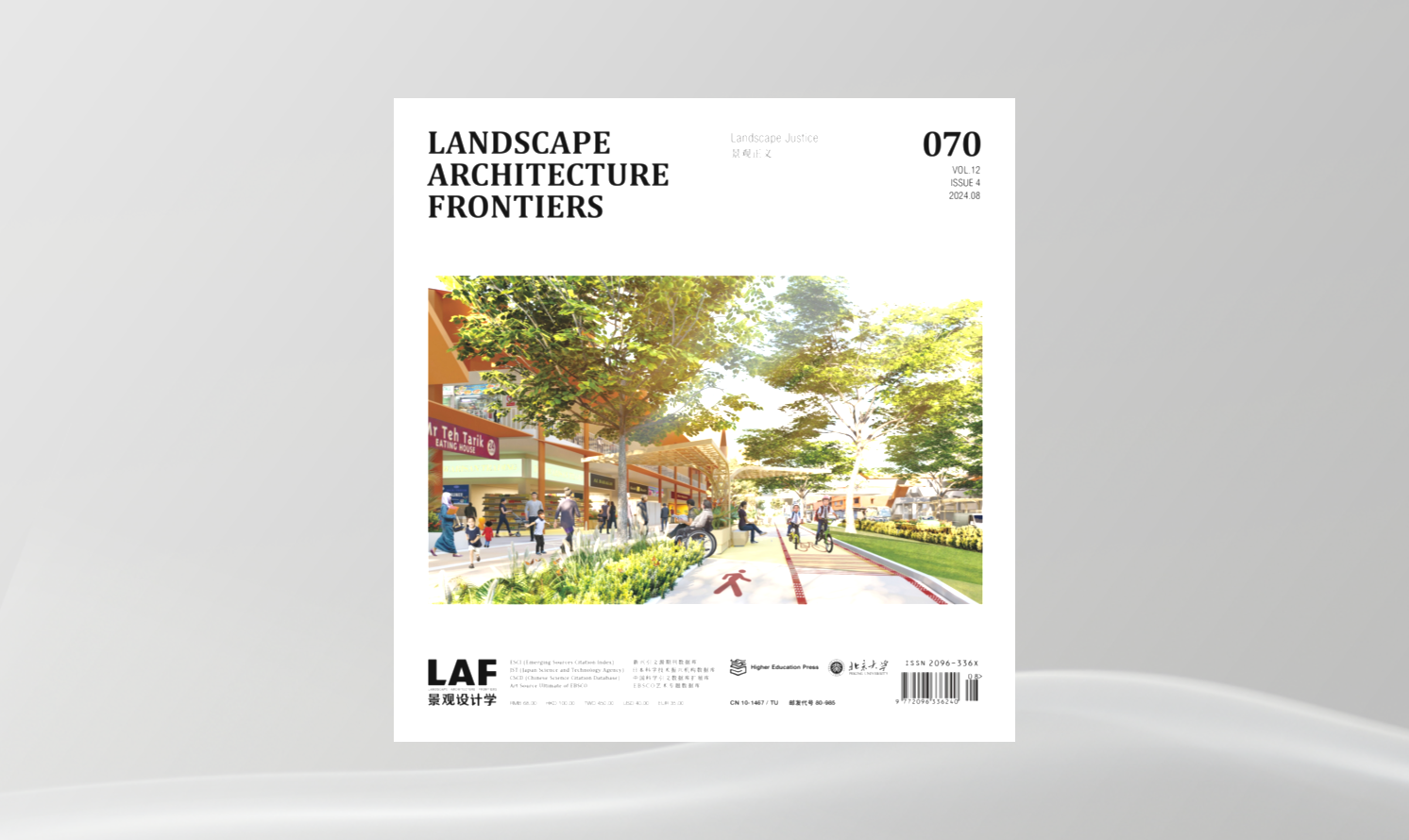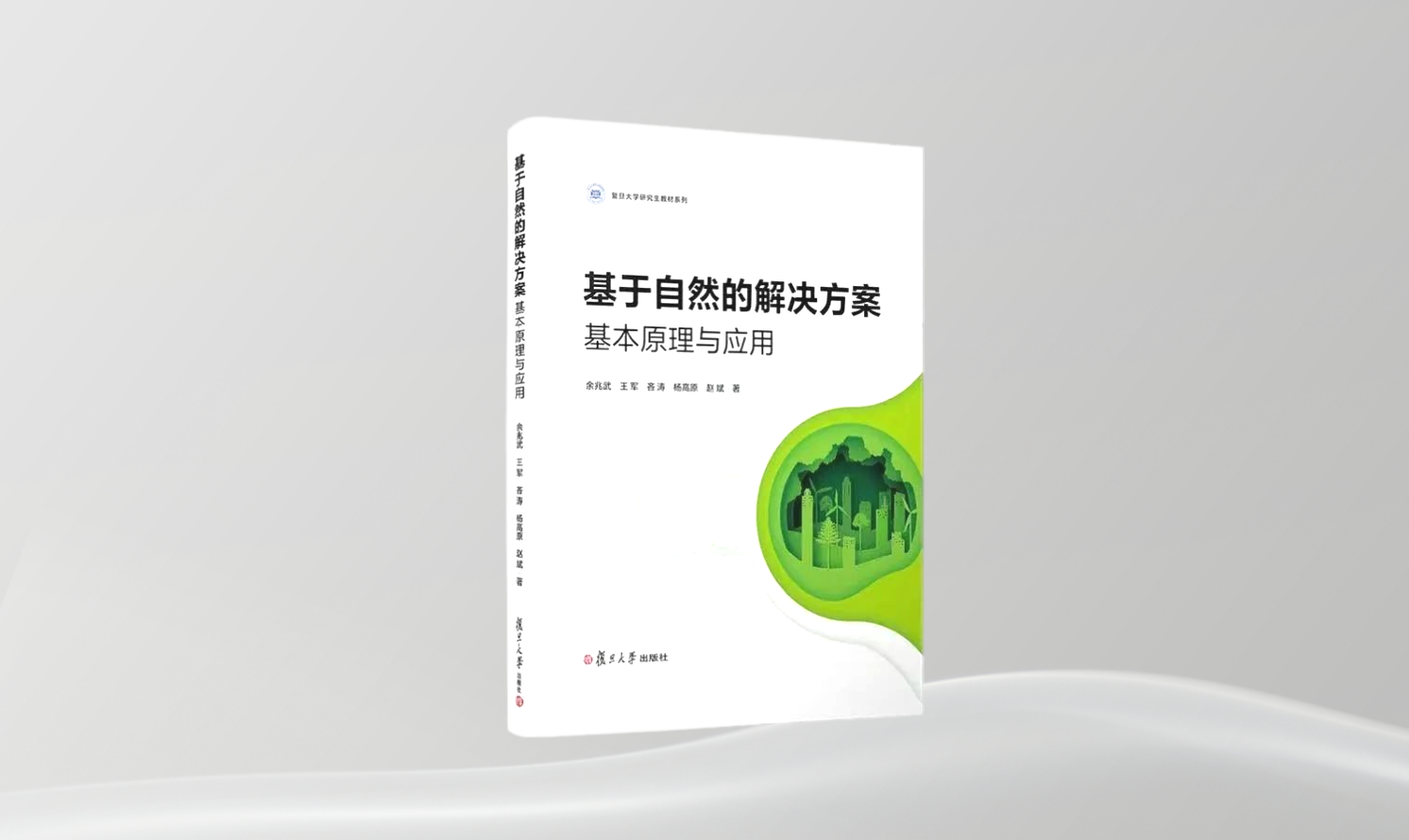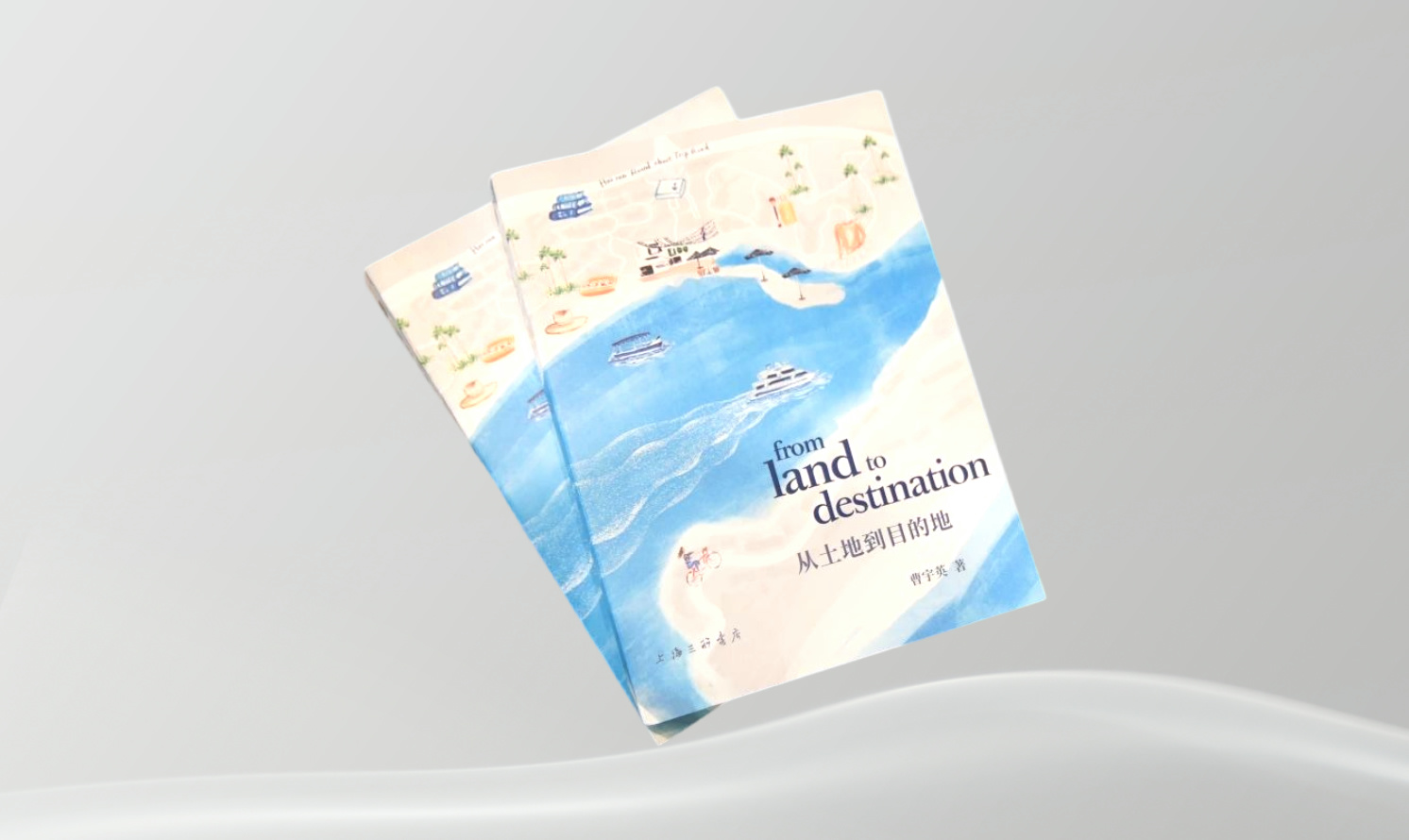對(duì)古代世界的干預(yù):?jiǎn)⑹?���、理論與案例
Intervene on the Ancient World: Lectures, Theories and Cases
作者:盧西亞諾?庫(kù)佩洛尼 Luciano CUPELLONI
摘要 ……
古代,尤其是“古代世界”—對(duì)于我們歐洲人�����,尤其對(duì)于大部分意大利人而言,羅馬帝國(guó)的落沒即意味著古代世界的結(jié)束—在每一個(gè)歷史時(shí)期��,都可以為文化����、藝術(shù)和建筑創(chuàng)作提供借鑒。它先于我們現(xiàn)有的時(shí)代而存在����,并以物質(zhì)的或歷史的傳承方式延續(xù)至今。無(wú)論其是處在不斷演化的狀態(tài)�����,還是處于一種瀕臨修復(fù)或是懷舊復(fù)興的狀態(tài)��,抑或由于意識(shí)形態(tài)的差別��,甚至僅僅是因?yàn)橛廾翢o(wú)知而已經(jīng)消失����,向古代世界借鑒都是必要的。
從文藝復(fù)興開始�����,至少到現(xiàn)代運(yùn)動(dòng),我們與古代之間的關(guān)系在連續(xù)與間斷����、記憶與遺忘、接連不斷的呈現(xiàn)或突如其來(lái)的發(fā)現(xiàn)���、并存與沖突中不斷轉(zhuǎn)換���。即便是在當(dāng)下,法律和規(guī)范建立起了各種限制�����,這種關(guān)系的復(fù)雜性還是衍生出了理論和實(shí)踐上的各種立場(chǎng)�,這些立場(chǎng)并不互相沖突����,但也百家爭(zhēng)鳴。當(dāng)然這種關(guān)系也會(huì)隨著主流考古文化及建筑師的態(tài)度的發(fā)展而變化�。
本文并不拘泥于討論與考古遺產(chǎn)特性相關(guān)的細(xì)節(jié)問(wèn)題,而旨在探討現(xiàn)代建筑文化與歷史之間的復(fù)雜關(guān)系��,這種關(guān)系可以被理解為一種可識(shí)別的記憶,也可以理解為一種古代在城市中心及其范圍中的呈現(xiàn)����。我們不能將現(xiàn)代性作為一個(gè)時(shí)間問(wèn)題來(lái)理解,它不是新事物��,因?yàn)樗鼪]有過(guò)去����;也不能將之作為當(dāng)代的某個(gè)方面來(lái)解讀(盡管它確實(shí)帶來(lái)了變革與創(chuàng)新);而是從它與過(guò)去的比較來(lái)談��。本文旨在追述塑造現(xiàn)代與歷史之間關(guān)系的各種事件和理論��。每一個(gè)事件���、每一個(gè)理論都具有啟發(fā)價(jià)值���。通過(guò)對(duì)歐洲,特別是意大利已建成項(xiàng)目的審視����,本文試圖勾勒出建筑、考古與景觀之間的復(fù)雜關(guān)系�����。
關(guān)鍵詞 ……
古代世界;考古遺產(chǎn)��;建筑�;現(xiàn)代性;關(guān)系
Abstract ...
Understood as what has preceded us, come to us through his physical and historical traces, the ancient and in particular "the ancient world" — that for us Europeans, and mostly for the Italians, coincides with the end of the Roman Empire — has always been, in every historical period, a reference to the culture, art, architecture. A required reference, either when it has been configured as a constant evolution and as when it is a critical restitution, a nostalgic revival or it has been cancelled, due to ideology or simply for ignorance and vulgarity.
From the Renaissance and at least till the Modern Movement, the relationship with the antique is an alternation of continuity and discontinuity, of memory and forgetfulness, of consolidated presence and sudden discovery, of coexistence and conflict. Even today, in spite of laws and regulations that establish the limits, the complexity of this relationship gives rise to theoretical and operational positions articulated if not conflicting. And of course, this relationship also changes depending on the prevalent archaeological culture and attitude of architects over time.
Beyond the specifics of the issues related to the peculiarities of the archaeological heritage, the theme refers to the complex relationship between modern architectural culture and history, understood as identitary memory, but also as presence of the antique in the heart of a city and its territory. Understanding modernity is not a matter of time, not as "new" because it has no past, nor to designate in some way the contemporaries, even if bringing ruptures and innovations, but rather as a way of being compared to the past. The contribution of the author aims to retrace the events and the various theories that have shaped the history of this relationship. Each one is a lesson. It then follows the tentative outline of the complexity of the relations between architecture, archaeology and landscape, through the critical examination of cases realized in Europe and in Italy.
Key words ...
Ancient World; Archaeological Heritage; Architecture; Modernity; Relationship
中國(guó)需要一場(chǎng)“復(fù)興運(yùn)動(dòng)”
China Needs a Renaissance
作者:劉慶柱 Qingzhu LIU
摘要 ……
城市在現(xiàn)代化的城鎮(zhèn)化過(guò)程中都不同程度地喪失了歷史文化特性����。考古學(xué)正是挖掘一個(gè)地區(qū)文化個(gè)性的重要方式�。只有對(duì)文化充分重視,城市才會(huì)有自己的特色�。但是目前來(lái)說(shuō),考古學(xué)與城市規(guī)劃是相互隔離的兩部分��。在未來(lái)���,我們應(yīng)促進(jìn)這兩個(gè)學(xué)科之間的融合��。文化遺產(chǎn)是不可再生的資源,文化遺跡保護(hù)應(yīng)在城市發(fā)展初期就在整體層面上作出初步的判別�。
關(guān)鍵詞……
考古;遺址�����;城市發(fā)展;城市特色�����;公眾
Abstract……
To a varying degree the modern cities have all lost their historical and cultural characteristics. Archaeology is one way to excavate the cultural identity of an area. The urban characteristics take root in its culture. But for now, archaeology and planning are currently mismatched and should do more to relate. I suggest that planning majors need enroll in a number of related courses to achieve a cross integration of disciplines. Culture heritage is non-renewable resources, we need make initial identification of culture heritage before city development.
Key words……
Archaeology; Relics; Urban Development; Urban Identity; Public
規(guī)劃師應(yīng)該去了解的另一門語(yǔ)言——地質(zhì)遺跡與古生物研究
Another Language that Designers Need to Understand — Geological Heritage and Paleontological Research
作者:江大勇 Dayong JIANG
摘要……
化石是古代生物的遺存�,是自然界留給我們的不可再生的資源。它們是我們?nèi)祟惲私獾厍蛏仙镅莼^(guò)程的唯一資料�,化石及其所存在的環(huán)境都應(yīng)當(dāng)?shù)玫奖A簟1驹L談介紹了國(guó)家重點(diǎn)保護(hù)古生物化石集中產(chǎn)地在城鎮(zhèn)化的進(jìn)程中所面臨的問(wèn)題�����,并指出古生物化石集中產(chǎn)地的規(guī)劃需要多專業(yè)��、多部門的配合��,以實(shí)現(xiàn)化石遺跡保護(hù)����、當(dāng)?shù)亟?jīng)濟(jì)發(fā)展、科學(xué)研究的共贏���。而對(duì)于規(guī)劃師而言��,只有提升自身素養(yǎng)��,并有效地與地質(zhì)學(xué)家溝通���,才能引導(dǎo)公眾去了解地質(zhì)知識(shí)����、探索自然�����。
關(guān)鍵詞……
地質(zhì)遺跡�;古生物研究;國(guó)家重點(diǎn)保護(hù)古生物化石集中產(chǎn)地��;城鎮(zhèn)發(fā)展�����;規(guī)劃
Abstract……
Fossils are the remains of ancient organisms, they are our non-renewable resource; they are the only data we have to understand the evolution of human life on Earth. Fossils and its existing environments must be preserved. This article introduces the issues what National Protected Important Paleontological Fossils Sites are facing in the urbanization process, and points out planning for these sites needs a multi-disciplinary and -sectoral collaboration for site preservation, local economic growth, and scientific research. Planners have to enhance their knowledge and productively communicate with geologists in order to guide the public to learn geology, and explore the nature.
Key words……
Geological Heritage; Paleontological Research; National Protected Important Paleontological Fossils Site; City and Town Development; Planning
協(xié)商下的城市景觀:秘魯利馬都市區(qū)的考古遺址與建成環(huán)境
The Negotiated Urban Landscape: Archaeological Sites and the Creation of the Metropolis of Lima, Peru
作者:羅薩貝拉?阿爾瓦利茲-卡德隆?希瓦-桑蒂斯德本 Rosabella Alvarez-Calderon SILVA-SANTISTEBAN
摘要……
20世紀(jì)�����,發(fā)生在利馬的城市擴(kuò)張和現(xiàn)代化進(jìn)程幾乎不曾將這座城市數(shù)量眾多的考古景觀納入考量�����,令這些場(chǎng)地在現(xiàn)代化的城市中缺乏鮮明的角色定位�。本文旨在探索如何對(duì)這些場(chǎng)地進(jìn)行設(shè)定和設(shè)計(jì),使之成為有意義的�、開放的、民主的城市和歷史性空間�����,令其既屬于過(guò)去��,也屬于現(xiàn)在����。
關(guān)鍵詞……
利馬;秘魯����;社會(huì)角色;公共空間����;考古學(xué)
Abstract……
The process of expansion and modernization of Lima during the20th century mostly excluded the city’s rich archaeological landscape, leaving these sites without a defined role in the modern city. This article asks how can these places be framed and designed as meaningful, open and democratic urban and historical places of both the past and present.
Key words……
Lima; Peru; Social Actors; Public Space; Archaeology
物質(zhì)遺留:美國(guó)伊薩卡瀑布與伊薩卡槍械棕地考古學(xué)設(shè)計(jì)應(yīng)用
Material Remnants: Design Archaeology on Ithaca Falls and the Ithaca Gun Brownfi eld Site
作者:凱瑟琳?德?阿爾梅達(dá) Catherine DE ALMEIDA
摘要……
景觀保存著一層一層嵌在地表和地下的歷史物質(zhì)遺留���。從表象上來(lái)說(shuō),空間反映的是一種壓縮的時(shí)間�;現(xiàn)在只是過(guò)去與未來(lái)之間的一瞬?���?脊艑W(xué)揭示了歷史活動(dòng)中的物質(zhì)遺跡,場(chǎng)地的歷史以不同的時(shí)間層次得以體現(xiàn)����。棕地保留了在土壤和水中以污染物形式存在的物質(zhì)遺跡,成為了解過(guò)去活動(dòng)的線索���。在那些工業(yè)活動(dòng)曾經(jīng)發(fā)生的棕地上���,其所遺留的大型建構(gòu)(比如物質(zhì)廢墟),展示著其工業(yè)化的過(guò)去和去工業(yè)化的未來(lái)���。這種類型的場(chǎng)地具有重塑景觀設(shè)計(jì)師角色的潛力�����,使其既成為能夠揭露過(guò)去的考古學(xué)家����,又成為能夠重新構(gòu)想場(chǎng)地未來(lái)的設(shè)計(jì)師。本文探索了未來(lái)在去工業(yè)化的場(chǎng)地上���,物質(zhì)遺跡和遺留對(duì)景觀設(shè)計(jì)的影響。在此以位于紐約州五指湖區(qū)域的兼具文化與歷史重要性的伊薩卡瀑布和伊薩卡槍械工廠舊址為例���,來(lái)研究擁有物質(zhì)遺留的���、歷史層次的復(fù)雜景觀。
關(guān)鍵詞……
物質(zhì)�����;遺跡��;棕地����;景觀考古學(xué);工業(yè)廢墟��;伊薩卡
Abstract……
Landscapes carry layered material remnants of history embedded in the surface and underground. Phenomenologically, spaces contain a compression of time; the present is the moment between past and future. Archaeology uncovers material traces from past activities, revealing a site’s history as layers of time. Brownfields bear material traces in the form of contaminants in the soil and / or water, and become clues for understanding past activities. Brownfields where industrial activities once occurred leave larger structures as material ruins, revealing an industrial past and a deindustrializing future. These types of sites have the potential to recast landscape architects as both archaeologists uncovering the past, and designers reimagining a new future for a site’s legacy. This article explores the impact of trace and remnant physical materials on the future terrain of landscape architecture operating within deindustrializing sites. Ithaca Falls and former Ithaca Gun Factory, a culturally and historically significant landscape in the Finger Lakes region of New York State, is used as a case study for approaching a historically layered, complex landscape with material remnants.
Key words……
Material; Traces; Brownfields; Landscape Archaeology; Industrial Ruin; Ithaca
以國(guó)際視角審視中國(guó)鄉(xiāng)村景觀與可持續(xù)城鎮(zhèn)化
Rural China’s Landscape and Sustainable Urbanization: An International Perspective
作者:瑪利亞-貝派絲?安德瑞尤斯 Maria-Beatrice ANDREUCCI
摘要……
中國(guó)的領(lǐng)導(dǎo)者于近期宣布��,要實(shí)現(xiàn)在2025年城市化水平達(dá)到70%(城鎮(zhèn)人口達(dá)到約9億人)的目標(biāo),同時(shí)強(qiáng)調(diào)未來(lái)城市化將不再以特大城市的擴(kuò)張(都市化)為特點(diǎn)�,而是主要集中在村鎮(zhèn)與小城市的發(fā)展(城鎮(zhèn)化)。農(nóng)業(yè)的地位隨著中國(guó)的城市經(jīng)濟(jì)發(fā)展而逐漸衰退����,而中國(guó)農(nóng)業(yè)中心區(qū)域幾千年的農(nóng)耕文明也隨著大量的鄉(xiāng)村聚落一起被清除。這些急速的城鎮(zhèn)化正在重新塑造中國(guó)的鄉(xiāng)村��,包括其景觀�、文化遺產(chǎn)以及社會(huì)結(jié)構(gòu)。本文作者審視了這些多種多樣的變化����,并總結(jié)了在2014年華東師范大學(xué)設(shè)計(jì)學(xué)院組織的關(guān)于小城鎮(zhèn)建設(shè)的設(shè)計(jì)課程上的成果。該設(shè)計(jì)課程在中國(guó)和歐洲分別展開�,就主題為“新城鎮(zhèn)建設(shè)過(guò)程中鄉(xiāng)村自然與人文風(fēng)貌的保護(hù)”的多種提案進(jìn)行了討論與評(píng)價(jià)。作者還陳述了景觀設(shè)計(jì)——尤其是與綠色基礎(chǔ)設(shè)施相關(guān)的設(shè)計(jì)與實(shí)施工作——如何在解決中國(guó)鄉(xiāng)村的城鎮(zhèn)化所面臨的挑戰(zhàn)過(guò)程中扮演起關(guān)鍵角色����。
關(guān)鍵詞……
綠色基礎(chǔ)設(shè)施;景觀設(shè)計(jì)學(xué)�����;傳統(tǒng)中國(guó)式鄉(xiāng)村��;城鎮(zhèn)化
Abstract……
China’s leaders have set an urbanization target of 70% (approximately 900 million people) by 2025 andhas emphasized that future urbanization will be characterized by growth in rural towns and small cities (ChengZhenHua, 城鎮(zhèn)化) not by expansion of megacities (DuShiHua, 都市化). As a consequence of China’s urban-focused economy, the role of agriculture has declined. Rural villages have been wiped out, and with them, thousands of years land cultivation and stewardship. Onrushing urbanization is reshaping rural China – its landscape, cultural heritage, and social structures. This paper examines these changes through the outcomes of a workshop about “Construction of Small Towns and Villages” organized by the ECNU School of Design in 2014 in China and Europe. At the workshop, proposals for “Preserving Rural Nature and Humanity Features during Urbanization” were discussed and critiqued. The paper concludes by describing how landscape architecture, and in particular Green Infrastructure, can play a key role in addressing the major challenges of Rural Chininse Urbanization.
Key words……
Green Infrastructure; Landscape Architecture; Traditional Chinese Rural Village; Urbanization
向公眾展現(xiàn)當(dāng)?shù)貧v史之璀璨——西班牙達(dá)洛卡考古場(chǎng)地設(shè)計(jì)
Show the Richness of Its Own Past to the Public — Archaeological Space in Daroca, Spain
作者:Sergio Sebastián Franco建筑設(shè)計(jì)工作室 Sergio Sebastián Franco
摘要 ……
這座達(dá)洛卡古宅的地面以類似折紙的形式被掀起,以向公眾展示其埋藏的璀璨歷史���。建成后����,此場(chǎng)地成為了這座城市中的一個(gè)標(biāo)志設(shè)計(jì)��,并非出于對(duì)歷史遺跡單單的保護(hù)�,而是源于設(shè)計(jì)師對(duì)場(chǎng)地精神的深刻理解���。達(dá)洛卡考古場(chǎng)地因人們對(duì)其的尊重而活絡(luò)�,猶如一片靜默歷史的層層縮影��。
關(guān)鍵詞 ……
建筑�;重寫本 ;考古���;達(dá)洛卡�����;博物館
Abstract ...
The ground of the historical villa of Daroca folds and lifts to show the richness of its past to the public. A single image is generated within the city, a silent palimpsest born from the respect for it, not from a mere conservation strategy but understanding the place.
Key words ...
Architecture; Palimpsest; Archaeology; Daroca; Museum
西安唐大明宮國(guó)家遺址公園規(guī)劃回顧
Master Plan for the National Relics Park of Tang Dynasty Daming Palace, Xi’an
作者:余定���,張哲 Ding YU, Zhe ZHANG
摘要 ……
大明宮是中國(guó)盛唐時(shí)期的主要宮殿建筑群之一�,被譽(yù)為“中國(guó)宮殿建筑的巔峰之作”����。西安唐大明宮國(guó)家大遺址保護(hù)展示示范園區(qū)暨遺址公園項(xiàng)目的規(guī)劃與實(shí)施,無(wú)論是從保護(hù)理念到項(xiàng)目操作���,從規(guī)劃方案到設(shè)計(jì)管理都具有非常強(qiáng)的示范性���。本文回顧了公園的規(guī)劃過(guò)程,并且從道路規(guī)劃�����、景觀設(shè)計(jì)����、水體設(shè)計(jì)、遺址保護(hù)與展示方式等方面詳細(xì)論述了大明宮的規(guī)劃思想�����。最后,文章從規(guī)劃管理經(jīng)驗(yàn)以及規(guī)劃實(shí)施效果兩個(gè)方面對(duì)其示范性予以進(jìn)一步闡釋�。
關(guān)鍵詞 ……
大明宮遺址;遺址公園���;總體規(guī)劃��;遺址保護(hù)與展示
Abstract ...
Daming Palace, known as "the pinnacle of Chinese palace architecture", is one of the most important palaces during China’s Tang Dynasty. The master plan and construction of the National Relics Park of Daming Palace, which consists of the Daming Palace Demonstration Park and the National Archaeological Heritage Park, is a successful exemplar of integration and implementation of design concepts and principles, project objectives, planning and design, and management. Through reviewing the entire process, from planning through construction, this article further demonstrates the main planning aspects, including palace gate and wall, roads and squares, green / blue space, and preservation and exhibition of the ruins. In the end this paper, we share the experience in management and evaluates the final implementation effects.
Key words ...
Relics of Daming Palace; Relics Park; Master Plan; Relics Preservation and Exhibition
陜西省韓城市梁帶村國(guó)家遺址公園概念規(guī)劃
Concept Planning for the Liangdai Village National Relics Park in Hancheng, Shaanxi
作者:余定���,胡彥 Ding YU, Yan HU
摘要 ……
2012年,IAPA以其綜合了人文遺址保護(hù)與展示��、景觀規(guī)劃����、旅游規(guī)劃等方面的設(shè)計(jì)方案����,贏得了陜西梁帶村國(guó)家遺址公園的國(guó)際競(jìng)賽。該方案旨在將梁帶村遺址公園打造成為一個(gè)能夠全面展示梁帶村兩周文化��、韓城地域文化�����、黃河文化的遺址公園����。
關(guān)鍵詞 ……
墓葬遺址�����;人文遺址保護(hù)與展示��;旅游規(guī)劃��;景觀規(guī)劃��;建筑設(shè)計(jì)
Abstract ...
In 2012, IAPA won the international competition of Liangdai Village National Relics Park in Hancheng, Shaanxi. Their winning scheme integrates various perspectives — including cultural relics preservation and exhibition, landscape planning, tourist planning and architectural design. The design proposal aims to transform Liangdai Village Relics Park into a comprehensive one, which represents and demonstrates its rich historic heritage — culture of Eastern and Western Zhou dynasties in the site, regional culture of Hancheng and the Yellow River culture.
Key words ...
Tomb Heritage; Cultural and Historical Heritage Preservation and Exhibition; Tourism Planning; Landscape Planning; Architecture Design
紀(jì)念之路:土耳其加里波利半島國(guó)家歷史公園景觀設(shè)計(jì)提案
Lines of Memories: A Landscape Design Proposal for the Gallipoli Peninsula Historical National Park, Turkey
作者:ONZ建筑設(shè)計(jì)事務(wù)所����,MDesign設(shè)計(jì)事務(wù)所�����,LOLA景觀設(shè)計(jì)事務(wù)所���,24H建筑設(shè)計(jì)事務(wù)所 / ONZ Architects, MDesign, LOLA, 24H Architecture
摘要 ……
加里波利半島擁有壯美的景觀和厚重的歷史���。設(shè)計(jì)團(tuán)隊(duì)希望突出該場(chǎng)地的現(xiàn)存價(jià)值,而非空降一個(gè)與當(dāng)?shù)氐莫?dú)特性和歷史性無(wú)關(guān)的全新設(shè)計(jì)。許多建筑師會(huì)希望通過(guò)創(chuàng)造新的構(gòu)筑物來(lái)彰顯個(gè)人印記����,但有時(shí)讓景觀自己“說(shuō)話”也許會(huì)產(chǎn)生更好的效果?����!凹o(jì)念之路”中的一條條游徑引導(dǎo)人們?nèi)プ穼v史的蹤跡����,同時(shí)將對(duì)場(chǎng)地的干預(yù)減到最低。
關(guān)鍵詞 ……
加里波利;紀(jì)念景觀;第一次世界大戰(zhàn)��;國(guó)家公園;歷史景觀
Abstract ...
The existing landscape and history of Gallipoli are extremely powerful. That is why the design team wanted to highlight the existing value of the site instead of bringing something totally new to this unique historical area. Most architects feel compelled to build. To leave their mark. Sometimes however it is better not to build, and to allow the landscape to speak. The Lines of Memories is a minimal intervention based on the traces of the history and solitude.
Key words ...
Gallipoli; Memorial Landscape; World War I; National Park; Historic Landscapes
巴塞羅那大時(shí)代:用展現(xiàn)來(lái)強(qiáng)化文化遺產(chǎn)和社會(huì)之間的聯(lián)系
Big Time BCN: Strengthening the Link between Heritage and Society through Representation
作者:300.000 Km/s工作室 / 300.000 Km/s
摘要 ……
“巴塞羅那大時(shí)代”是借由數(shù)位工具所提供的模擬制圖能力及新型互動(dòng)發(fā)展?jié)摿Χ瞥傻陌腿_那動(dòng)態(tài)地圖���,其旨在文化遺產(chǎn)與保護(hù)及熱愛巴塞羅那古跡的使用者之間營(yíng)造出一種全新的聯(lián)系,并隨之加強(qiáng)認(rèn)同感的紐帶��。這個(gè)項(xiàng)目將巴塞羅那超過(guò)70 000個(gè)城市區(qū)塊中的3 000處歷史遺跡數(shù)據(jù)用交互可視化的方式予以了展示�。
關(guān)鍵詞 ……
遺產(chǎn);建筑�;制圖;大數(shù)據(jù);巴塞羅那
Abstract ...
Big Time BCN is a dynamic cartography of Barcelona that uses the synthetic capacity of “mapping” and new interaction possibilities offered by digital tools to establish novel links between heritage and the society that protects and admires it, while strengthening the bonds of identity. This project is an interactive visualization of data from more than 70,000 plots and 3,000 monuments.
Key words ...
Heritage; Architecture; Cartography; Big Data; Barcelona
疏離永恒:對(duì)瞬息城市化及批判性保護(hù)的反思
Detaching from Permanence: Reflections on Ephemeral Urbanism and Critical Conservation
作者:費(fèi)利佩?維拉�����,本杰明?施爾巴斯 Felipe VERA, Benjamin SCHEERBARTH
摘要 ……
關(guān)于保護(hù)的話題總是圍繞著保留與拆除既有建造實(shí)物之間的矛盾而展開��。從一開始���,這些討論的重點(diǎn)總集中于保護(hù)“什么”����,而非“如何”保護(hù)����。因此,關(guān)注的焦點(diǎn)一直圍繞著物體本身展開����,而忽視了有效和有意義的保護(hù)模式。然而���,伴隨著近期將保護(hù)的討論對(duì)象延伸至景觀和地理環(huán)境的這一趨勢(shì)�����,曾經(jīng)局限于物體本身的保護(hù)模式—而非關(guān)注過(guò)程及行為的保護(hù)模式—逐漸變得落伍�。例如,越來(lái)越多的人開始不再對(duì)物質(zhì)實(shí)體老化與消逝的問(wèn)題抱以恐懼的心態(tài)����。在這一新的框架之下,我們建議審視那些臨時(shí)性環(huán)境����,這可以有效地挑戰(zhàn)正統(tǒng)的思維和討論。換言之�����,保護(hù)實(shí)踐可以從那些并不完全依賴于物質(zhì)實(shí)體建造便可保存集體記憶的案例中學(xué)習(xí)���,從而將焦點(diǎn)放在城市景觀更加寬廣的維度�。本文從目前已成為主導(dǎo)趨勢(shì)的“瞬息城市化”中找尋參考案例��,試圖闡釋那些雖然與實(shí)物直接關(guān)聯(lián)����,卻不需要盲目追求實(shí)體連續(xù)性以保存其價(jià)值的暫時(shí)性行為�。
關(guān)鍵詞 ……
批判性性保護(hù)��;拆除����;分解����;仿制;文化生態(tài)學(xué)
Abstract ...
Conversations on conservation have explored different strategies for resolving the tension between preserving and destroying material constructions. From their inception, these discussions have prioritized the question of what to preserve over how to do it. In consequence, the focus has been on the object itself rather than on the articulation of effective and meaningful conservation modalities. However, not least due to the recent tendency to broaden subjects of conservation to include landscape and geographical contexts, formulations of conservation in objectual terms — rather than in terms of processes and practices — seem outdated. There is growing interest, for instance, in overcoming the fear of material aging and loss. Under this emergent framework, we suggest that looking at contexts that are by definition temporary could productively challenge the orthodox discourse. In other words, conservation practices might learn from cases in which collective memory does not necessarily rely on material construction, thus placing the emphasis on thicker dimensions of the urban landscape. Drawing from examples of what has been recently denominated as Ephemeral Urbanism, this article describes and learns from temporal operations that, while being directly related to materiality, conserve value without fetishizing its continuity.
Key words ...
Critical Conservation; Demolition; Dissolution; Resemblance; Cultural Ecology
廢棄物堆積山的轉(zhuǎn)變:羅馬泰斯塔修山的公眾集聚和材料遷移
Midden Mutations: Civic Aggregation and Material Migration at Monte Testaccio
作者:邁克爾?依茲本 Michael EZBAN
摘要 ……
泰斯塔修山是一個(gè)存留至今的古代堆填場(chǎng)�,由近2 500萬(wàn)個(gè)陶質(zhì)雙耳瓶的碎片堆積而成。在地中海地區(qū)����,這些雙耳瓶曾被用于將橄欖油由伊伯利亞省裝運(yùn)至羅馬帝國(guó)的中心。泰斯塔修山是羅馬城的野性遺跡�����,一部有關(guān)材料���、傳說(shuō)�����、利益和事件的���,不那么賞心悅目的歷史����。幾個(gè)世紀(jì)以來(lái)的各種活動(dòng)��、利益和使用者的變遷已經(jīng)改變了這個(gè)垃圾空間的文化特征��,而該場(chǎng)地獨(dú)特的物質(zhì)條件則助推了各種新奇的使用和功能安排�。作為歷史性的先例,泰斯塔修山提供了可供現(xiàn)代人參考的兩種將垃圾空間融入城市文明的模式��。第一種模式為“聚集”—通過(guò)使城市功能和居民向已關(guān)閉的都市廢棄物堆填場(chǎng)聚集��,從而提升該遺跡的文化價(jià)值��;第二種模式則是“分離”—堆填場(chǎng)是材料和能源的寶庫(kù)��,從長(zhǎng)遠(yuǎn)來(lái)看��,對(duì)它們進(jìn)行開發(fā)能夠推動(dòng)本地和遠(yuǎn)郊的工業(yè)生態(tài)和城市進(jìn)程�����。泰斯塔修山這一歷史遺跡所展現(xiàn)出的持久活力����,強(qiáng)有力地向我們證明:垃圾景觀可以轉(zhuǎn)化為公眾參與的推動(dòng)者和城市發(fā)展的催化劑。
關(guān)鍵詞 ……
泰斯塔修山�;堆填場(chǎng)再利用;堆填場(chǎng)先例�;垃圾景觀
Abstract ...
Monte Testaccio is an extant ancient landfill comprised of the fragments of nearly 25 million clay amphorae which conveyed olive oil across the Mediterranean Sea from the provinces of Hispania to the heart of the Roman Empire. Monte Testaccio is Rome’s feral monument, an ungainly aggregation of material, mythology, interests and events. Over centuries the intersection of diverse activities, interests and constituencies has transformed the cultural identity of this waste space, and the peculiar material condition of the site has sponsored curious uses and programs. As a historical precedent, Monte Testaccio offers two models for the contemporary aspiration to transform waste spaces into civic terrain. The first model involves the aggregation of many uses and constituencies on a closed metropolitan landfill in order to increase its cultural value. The second model that Monte Testaccio provides is one of dispersal — landfills can be troves of valuable material and potential energy that can be mined to prompt local and distant industrial ecologies and urban processes over time. The vitality and longevity of this archaeological site make Monte Testaccio a potent example of what a waste landscape can become: an agent of civic engagement and an urban catalyst.
Key words ...
Monte Testaccio; Landfill Reclamation; Landfill Precedent; Waste Landscape
 京公海網(wǎng)安備 110108000058號(hào)
京公海網(wǎng)安備 110108000058號(hào)
